emergency cardiac resuscitation training
Cardiopulmonary resuscitation (CPR) is a first aid measure in people who have stopped breathing for certain reasons. CPR aims to reopen a narrowed or closed airway altogether. CPR is needed for people drowning, heart attack, shortness of breath due to shock due to accidents, falls, and so forth.
However, special attention should be paid to victims of fainting due to accidents, should not be immediately removed because it is feared there is a broken bone, especially patients with broken neck bone.
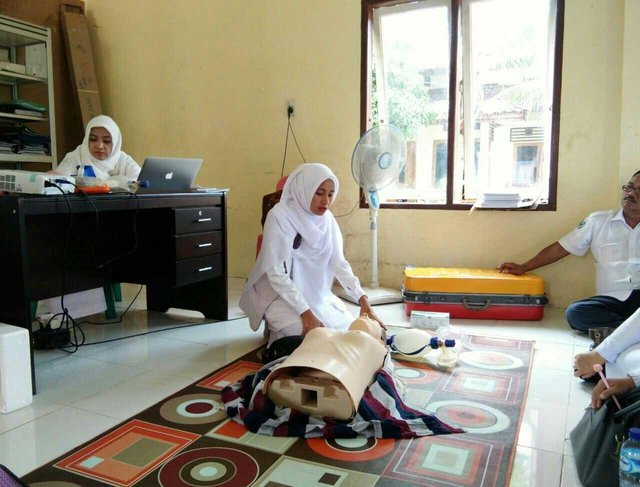
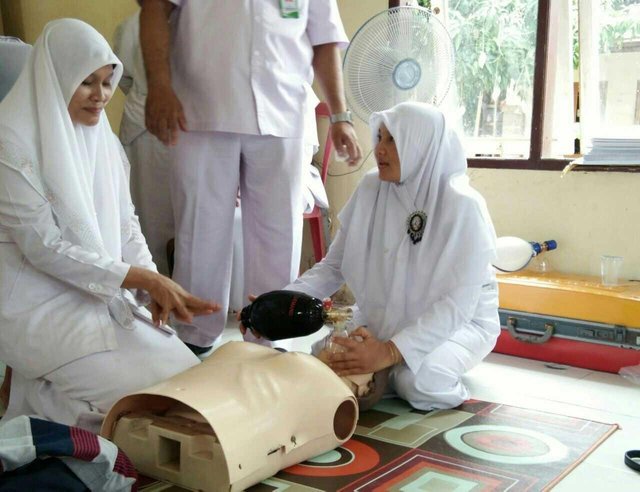
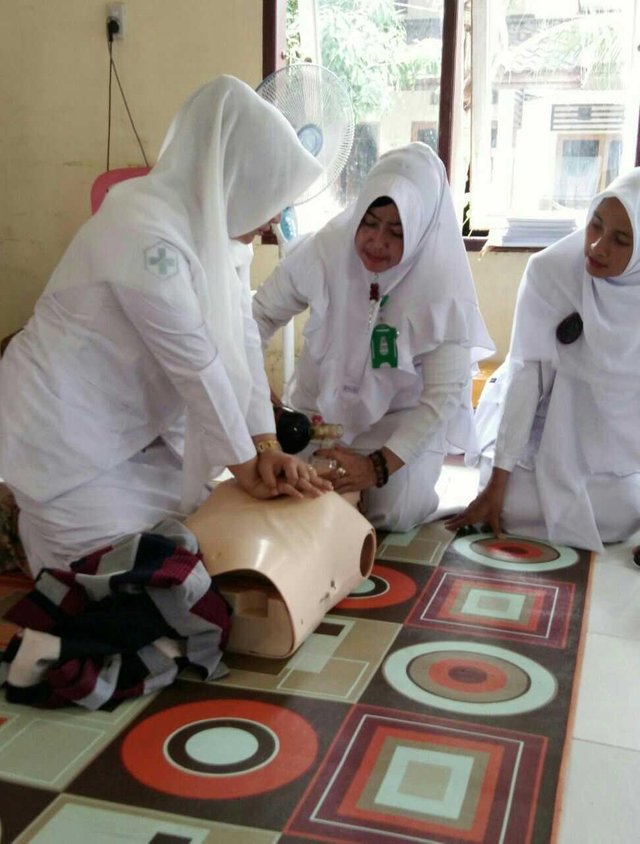
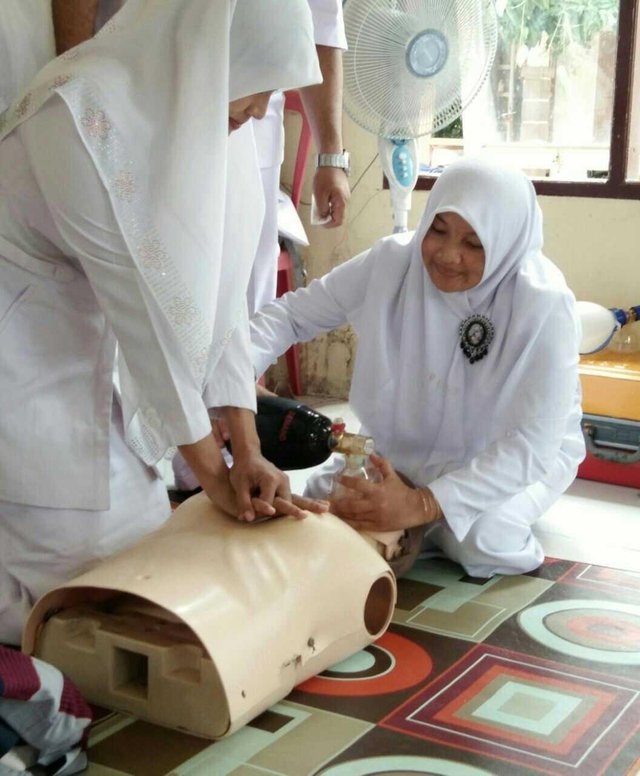
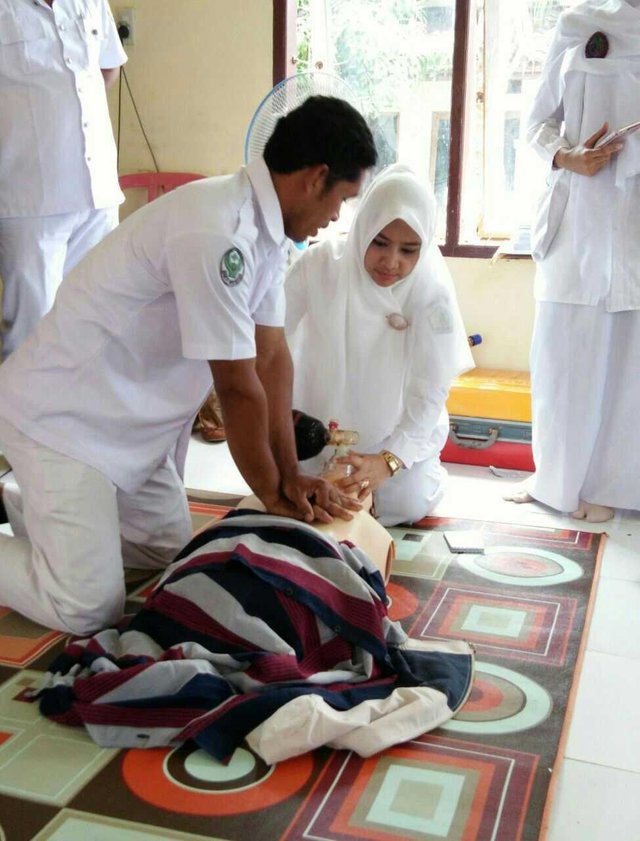
the steps to perform cardiopulmonary resuscitation (CPR) consisting of DR-CAB are as follows:
Danger (note the danger around and self protection)
this first CPR step is to assess the available hazards and resources you have and the kind of help you need. make sure the circumstances are safe and protection / self-protection at least using gloves or something that covers the hands when touching the victim and the mouth to mouth base during cardiac pulmonary resuscitation.Response (check victim awareness level)
check patient response by:patted the shoulders and shook the victim's body to call the victim with a loud voice give pain stimulation. 2.bila no response yet do Call for help by screaming for help to people around immediately call the emergency number.
Circulation (assessment of pulse rate)
do a pulse examination in the carotid pulse located dileher, pulse examination should not exceed 10 seconds if the pulse is not palpable immediately do chest compression. by the way: Chest Compression (CPR)
- position the patient supine. 2. place the patient on a hard and flat place. 3. Immediately do CPR by making regular emphasis on the chest wall, it is expected the blood to flow throughout the vital organs and vital organs are still functioning until the officer with more complete equipment comes. 4. apply emphasis by using the base of the palm of the hand, with the position of one hand over the other hand. 5. The position of emphasis lies two fingers on Proxesus Xypoideus. 6. give chest compression with sufficient frequency (minimum 100x / min) for adult, give chest compression with depth of at least 2 inch (5cm) for children about 5cm (2 inchi) in baby 4cm (1.5 inch) 7. Keep the helper's arms straight, so that the press is the shoulder (or rather the upper body) and not the hand or the elbow. 8.Make sure the pressure is straight down on the breastbone because otherwise the body may slip and the pressure to push will be lost. 9. Use weight when we apply compression pressure 30 times and followed by ventilation or give 2-time breath (30: 2) give chance for chest to fully re-develop after every compression. 10. Avoid excessive aid breathing.
note: "if the carotid pulse is not palpable, the breath must stop.
but if the breathing stops not necessarily the carotid pulse is not palpable"
if the carotid pulse is touched do the next step:
- Airway (opening of the airway)
this action aims to liberate the patient's airway. this should be done by a person who has received basic life support or professional health training using head tilt chin lift techniques for patients with known non-neck injury. for patients suspected of servical injury do not use this technique. the technique used is pulling the jaw without doing the head extension (jaw thrust)
- Breathing (breathing)
do artificial breathing after the airway looks safe. the primary purpose of breath aid is to maintain adequate oxygenation with the secondary purpose of removing CO2.
after cardiopulmonary resuscitation, patients who have recovered pulse and breathing. position the victim with a sloping position or recovery position so that if there is vomiting / lots of fluid does not occur aspiration (fluid into the lungs)
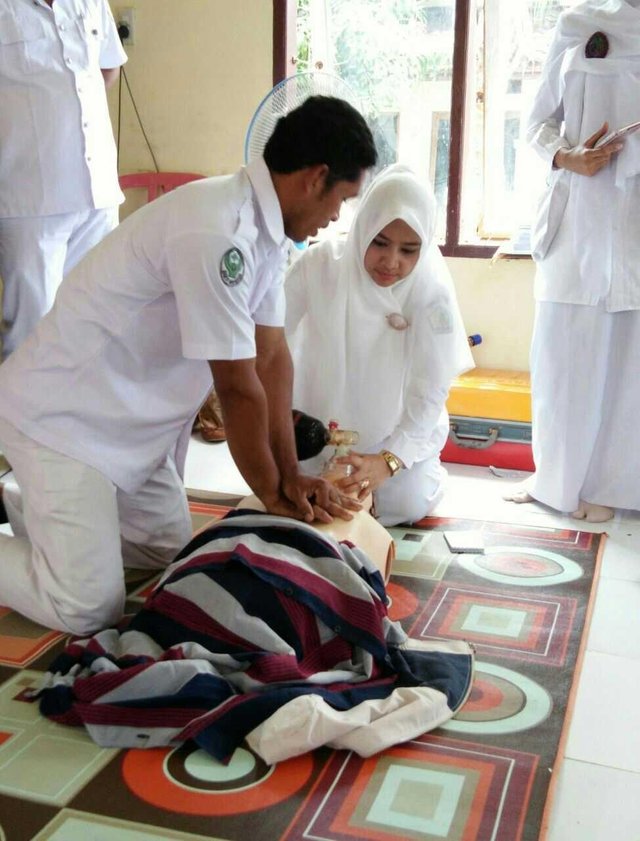
The signs of CPR success:
1.Dada should go up and down with every puff (ventilation). 2.Pupil reacts or appears to change normally (pupils should shrink when given light). 3.Reactible heartbeat Spontaneous respiratory breathing. 4. Can be seen Skin pale patients are reduced or return to normal. 5.Penderita can move his hands or feet. 6. Patients trying to swallow. 7. Sufferers squirm or rebel
When CPR Must be discontinued:
- the helper has done the help optimally 2.mengalami fatigue or if the medical officer has arrived on the scene. 3.Where are the signs - the exact death of the sufferer who did not respond after the continued follow-up CPR at least 20 minutes.
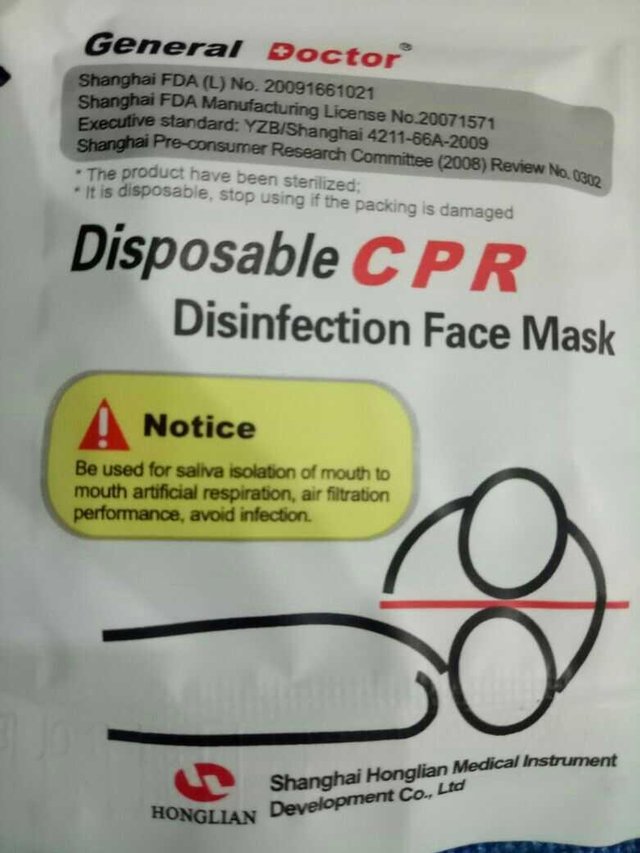
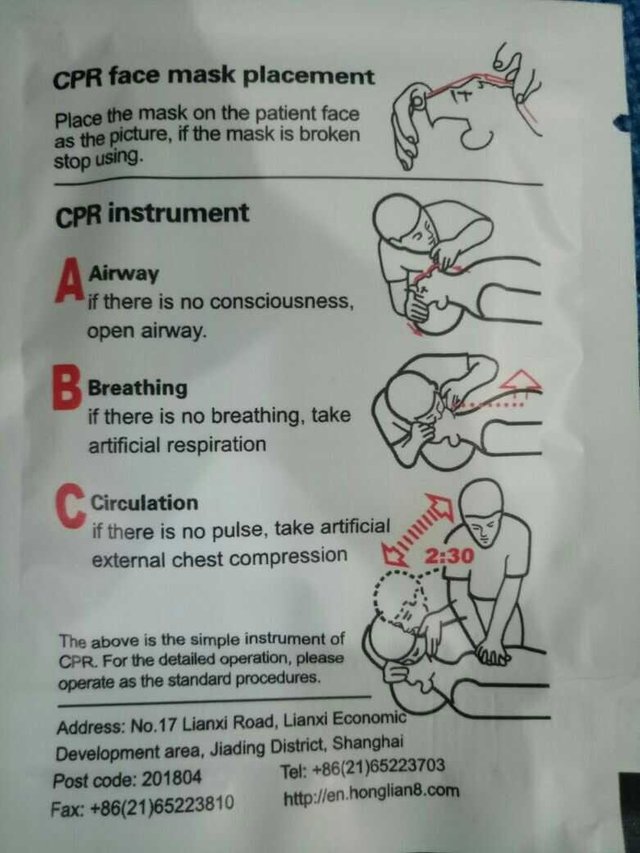
this is one tool to perform artificial breathing action through word of mouth, to avoid the occurrence of infection.